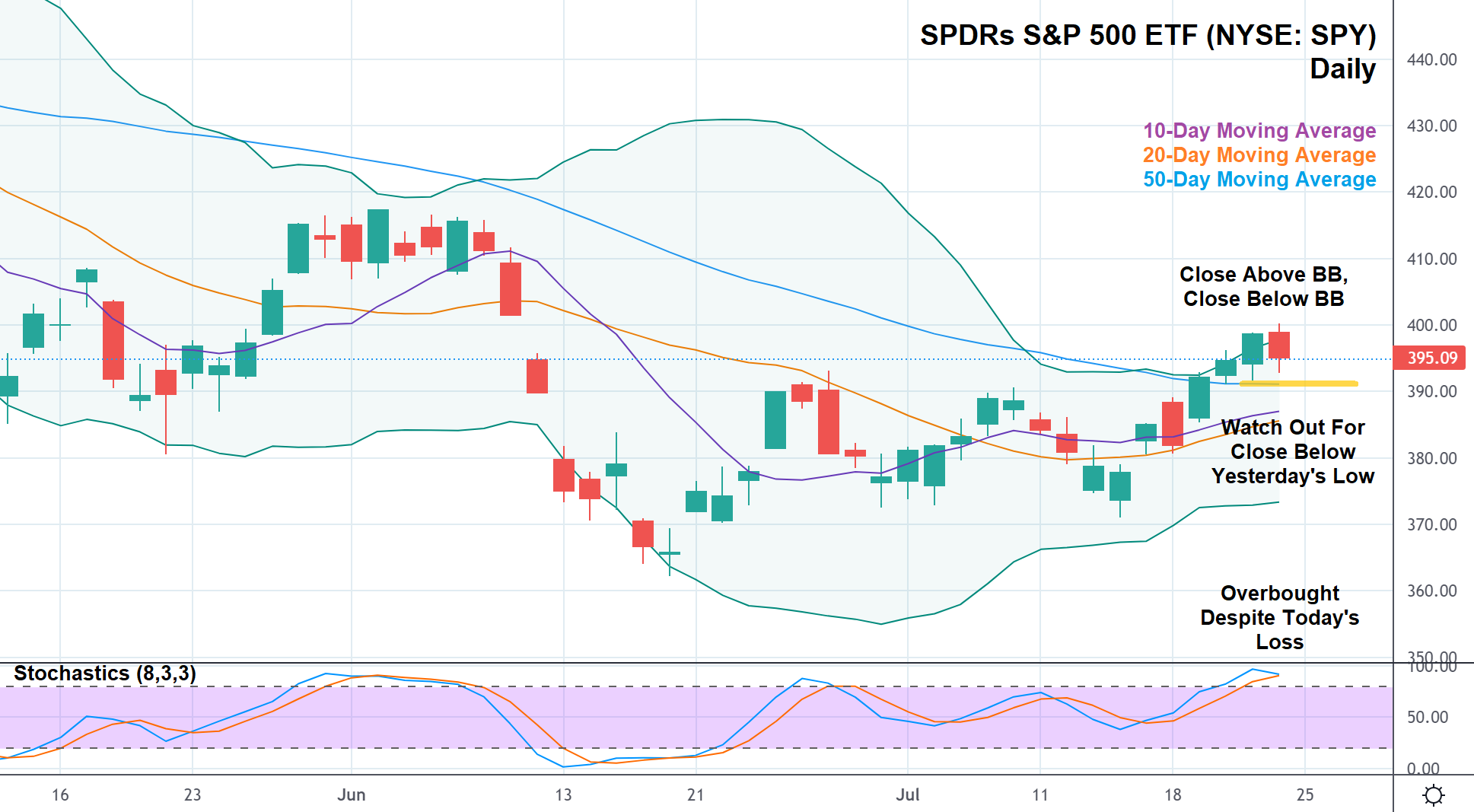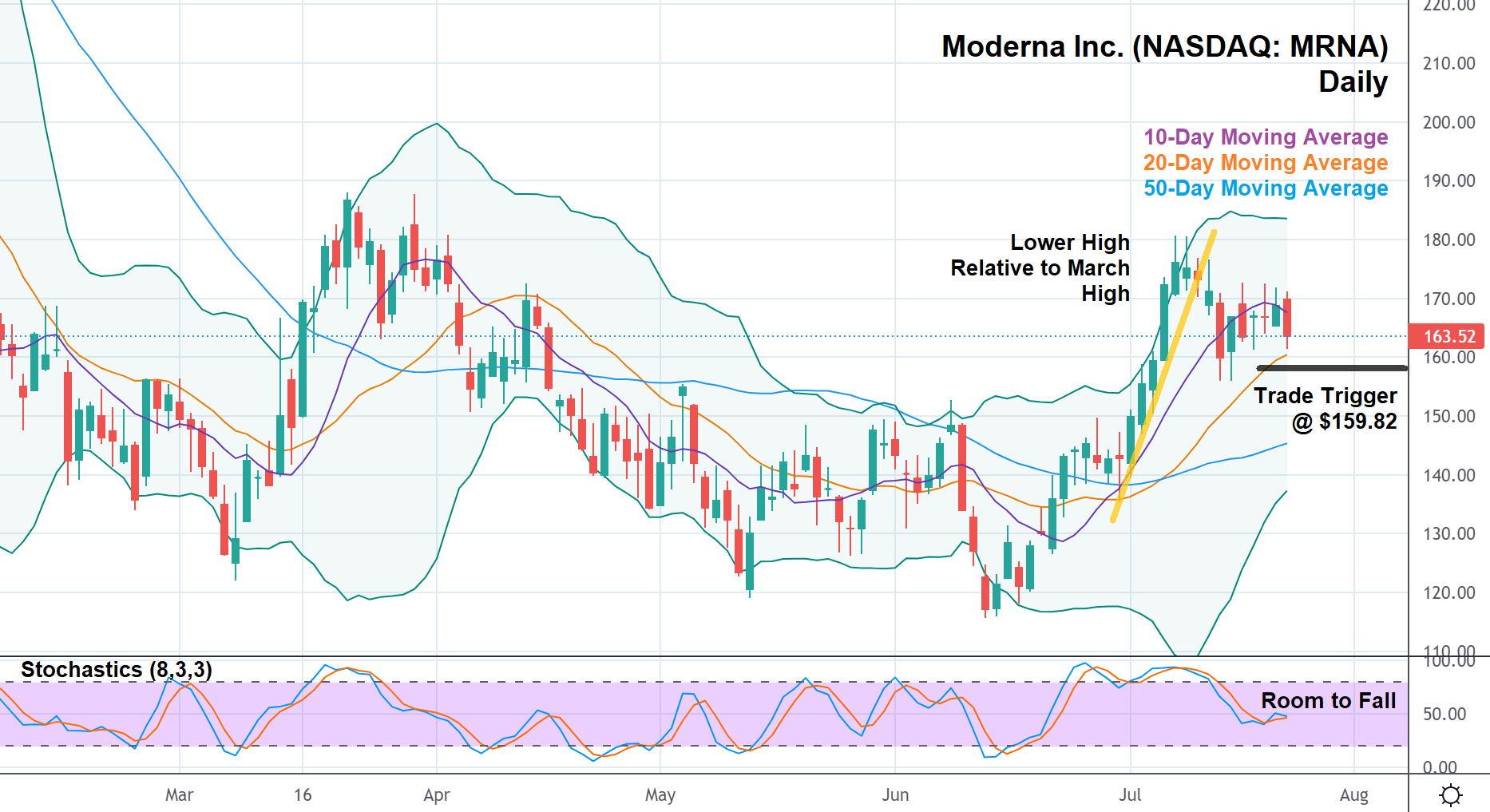
Stocks fell today after Snap Inc (NYSE: SNAP) reported earnings last night, revealing a major “miss.” The company told shareholders it had to remove guidance for Q3, and, even worse, that growth for the quarter thus far is flat compared to Q3 last year. Analysts expected 18% sales growth year-over-year by comparison.
“We are not satisfied with the results we are delivering, regardless of the current headwinds,” the company said.
The shockingly bad report crashed SNAP shares, which finished almost 40% lower on the day.
This plunged the Nasdaq Composite (-1.87%) lower, too, pulling down the S&P (-0.93%). The Dow (-0.43%) fell modestly.
“Snap has managed to snap the uptrend in the Nasdaq by reporting disappointing earnings, which has created a cascading effect on the S&P,” explained Sam Stovall, CFRA Research’s chief investment strategist.
“This is just an example of the volatility that investors should expect as earnings are reported, and, therefore, could cause fluctuations in prices in response to better than or worse than results.”
But will the SNAP disaster be enough to kill the bear market rally?

Probably not, but anyone who bought the recent dip should be on the lookout for a reversal next week. The S&P (as represented by the SPY) closed above the upper Bollinger Band (BB) yesterday and then closed below it today, forming a classic bearish reversal pattern.
The reversal is confirmed in this case when the lowest low of the pattern is taken out. For the pattern above, that would be yesterday’s low.
Consider also that the stochastic indicator remains in overbought territory (a reading >80) despite today’s significant loss. If the S&P does take out yesterday’s low, it may only be a matter of time until it retraces to support yet again.
The next FOMC meeting ends on July 27th and Fed Chairman Jerome Powell is expected to announce a 75 basis point rate hike.
That might be enough to trigger a reversal. And if the hike is bigger than anticipated, we may see new lows as a result.

MRNA’s in a similar predicament as the S&P except that it has already breached its 10-day moving average. The stock set a lower high relative to its March high as well and the stochastic indicator suggests that it has room to fall. Plus, MRNA closed beneath its wicked short-term bullish trend (yellow trendline).
The 20-day moving average may provide some support here, but if it’s broken through, a bearish reversal could result. For those reasons, it might make sense to take MRNA short if it trades below today’s low (and the 20-day moving average) with a trade trigger of $159.82 as the general market attempts to right the ship following some surprisingly bad guidance from SNAP.







